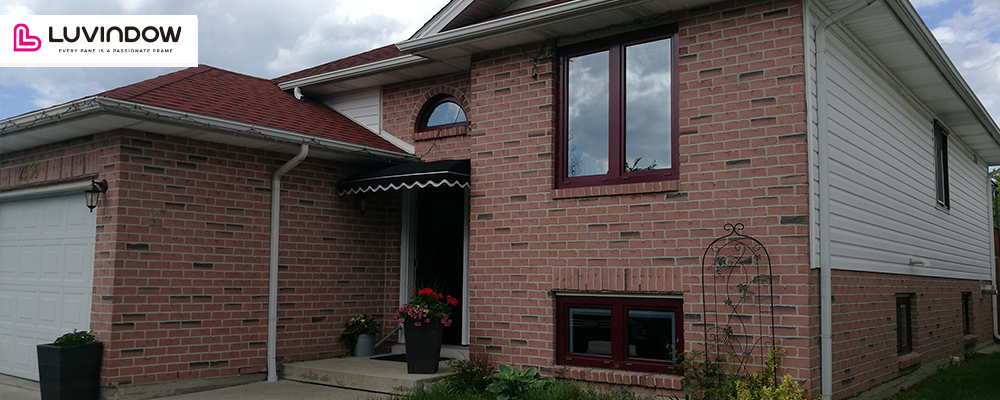How Weep Holes Can Save Your Windows From Damage
There is an article about the weep holes at the window sash, they can drain water between the frame and sash, and make a window's service life longer.
The most common cause of damage to windows is condensation. When cold air comes in contact with warm glass, water droplets form on the inside of the glass. This can lead to pitting and staining of the window frame or sash.
When this moisture hardens into ice crystals, it can crack or break off from the frame or sash. Some people believe this type of damage is caused by temperature differences between inside and outside air, causing ice crystal expansion within glass panes. However, there is no scientific evidence that supports this claim. It seems more likely that condensation causes crystallization rather than temperature differences.
If you live in an area where there are frequent thunderstorms or heavy snowfall, it's important to consider adding weep holes in your windows to prevent freezing damage from occurring on your home's exterior surfaces.
What is a Weep Hole?
Weep holes are small perforations located near the top or bottom of a window frame or sash where air flows from one side to another during cooling, heating, and ventilation.
A weep hole is an opening in the window frame that allows water to drain from a window. It can be made with wood or metal, but it must be sealed from the inside of the window frame to prevent water from entering and damaging the structure.
Weep holes are typically used on high-traffic areas like doors and windows in commercial buildings. They help maintain dry conditions within the building by allowing excess water to drain away from the windows. Because they allow water to escape, they also prevent condensation from forming on the glass surface, which can damage its integrity over time.
How do I know if my windows need weep holes?
If you live in a high-moisture area or in rainy climates during the summertime and with wood or vinyl windows simultaneously, you may want to install weep holes in your windows. The best way to tell is to look at the glass in your windows. If it has water stains on it, then you should consider installing weep holes.
These areas tend to be where the temperature fluctuates the most throughout the day. Water vapor from outside can be very heavy and lead to mold growth in interior spaces which can be extremely damaging to your home's items of furniture and environment. Even worse, water vapor can flow through cracks in exterior walls and cause moisture damage to wood surfaces inside your home as well as exterior walls.
Find a decent manufacturer before you buy windows
Windows with weep holes are designed to allow moisture to flow from the bottom of the window frame to the top. This helps prevent damage to your home, especially if you live in a climate where you get a lot of rain or snow.
Windows with weep holes are available in all shapes and sizes, so it's easy to find one that fits your home perfectly.
They can be purchased from manufacturers who specialize in high-end windows, or from companies that build custom windows for homes that have unique features like large openings or high ceilings. If you're looking for a new window and want something different than what's offered at your local hardware store, top window and door manufacturers offer high-end windows with weep holes as an option.
Weep holes are expensive to install, but they're well worth it if you live in a place where there's a lot of rain or snow. In some cases, installing weep holes can even save your windows from getting broken by hail stones or other weather-related damage.
Sloped Sill vs Weep Holes
A sloped sill is the part of a building that provides the foundation for the floor. A weep hole is the opening at the bottom of a chimney, fireplace or vent pipe. These two terms are often confused in construction, but there are subtle differences between them that can affect how your home will be built and what it may cost you to build it.
The main difference between a sloped sill and a weep hole is that with a weep hole, water flows out of the house instead of falling down inside it. Sloped sills are generally used when there are no drainage issues or when there are plans to install plumbing in the future. A sloped sill also allows for more space around the perimeter of your home while helping to protect it from water damage during heavy rains or flooding events.
Sloped sills require much more work than weep holes do because they need to be dug out and lined with concrete before they can be used as foundations for homes or other buildings. This can be costly if you are not planning on having plumbing installed inside your home at some point in time in the future because you will have to pay someone else to do this work for you if you do not want to.



 Picture Windows
Picture Windows Single Double Hung Windows
Single Double Hung Windows Tilt & Turn Windows
Tilt & Turn Windows Sliding Windows
Sliding Windows Bi-Fold Windows
Bi-Fold Windows Gliding Patio Doors
Gliding Patio Doors Bi-Fold Doors
Bi-Fold Doors Lift and Slide
Lift and Slide  Entry Doors
Entry Doors Swinging Doors
Swinging Doors